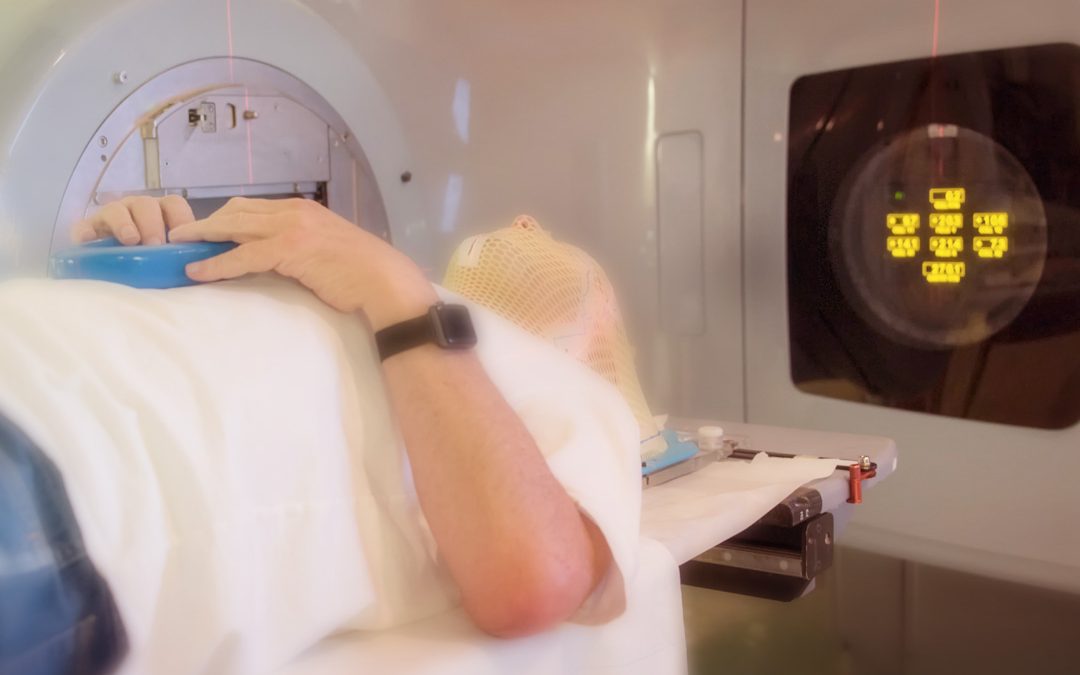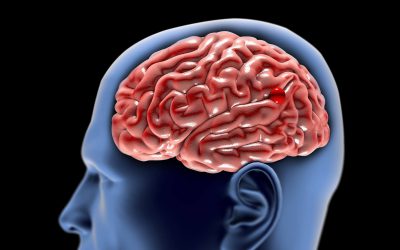Brain tumors are usually divided into three types: intrinsic (grow from the brain), extrinsic (grow from around the brain), or metastatic (come from other areas of the body and implant in the brain).
Intrinsic tumors
Intrinsic tumors, otherwise known as gliomas, can range from grade 1 (benign) to grade 4 (very dangerous). For a low-grade brain tumor (grade 1 and 2), surgery may be the only treatment needed, especially if all of the tumors can be removed. If there is visible tumor remaining after surgery, radiation therapy and chemotherapy may be used. For higher-grade tumors (grade 3 and 4), treatment usually begins with surgery, followed by radiation therapy and chemotherapy.
Extrinsic tumors
Extrinsic tumors, like meningiomas, schwannomas, epidermoids, and pitutitary tumors, can often be surgically resected–removal of all or part of an organ, tissue, or structure–and cured. Some of these extrinsic tumors can be more dangerous, and can even be “high grade.” Under those circumstances, surgery by itself is rarely curative, and radiation and or chemotherapy become important parts of treatment.
Metastatic tumors
Metastatic tumors, by definition, are high-grade tumors. These tumors are almost always treated with radiation. Often focused radiation, like Gamma Knife, can be very helpful. Larger metastatic tumors may need to be removed with microsurgery.
Brain Tumor Treatments
Surgical removal
Surgical removal of the tumor and some surrounding healthy tissue is usually the first treatment used for a brain tumor, and is often the only treatment needed for a low-grade brain tumor. Removing the tumor can improve neurological symptoms, provide tissue for diagnosis, help make other brain tumor treatments more effective, and, in many instances, improve the prognosis of a person with a brain tumor.
Radiation therapy
Radiation therapy is the use of high-energy x-rays or other particles to destroy tumor cells. Radiation therapy may be administered to slow or stop the growth of a tumor. It is typically given after surgery and possibly along with chemotherapy. The most common type of radiation treatment is called external-beam radiation therapy, which is radiation given from a machine outside the body. When radiation treatment is given using implants, it is called internal radiation therapy or brachytherapy. A doctor who specializes in giving radiation therapy to treat a tumor is called a radiation oncologist.
Chemotherapy
Chemotherapy is the use of drugs to destroy tumor cells, usually by stopping the cancer cells’ ability to grow and divide. The goal of chemotherapy can be to destroy tumor cells remaining after surgery, slow a tumor’s growth, or reduce symptoms.
Targeted therapy
In addition to standard chemotherapy, targeted therapy is a treatment that pinpoints the tumor’s specific genes, proteins, or the tissue environment that contributes to a tumor’s growth and survival. This type of treatment blocks the growth and spread of tumor cells while limiting the damage to healthy cells.
Recent studies show that not all tumors have the same targets, and some tumors may have more than one target. To find the most effective treatment, your doctor may run tests to identify the genes, proteins, and other factors in your tumor. This helps doctors better match each patient with the most effective treatment whenever possible. In addition, many research studies are now taking place to find out more about specific molecular targets and new treatments directed at them.
Successfully treating brain tumors can be challenging. The body’s blood–brain barrier normally protects the brain and spinal cord from harmful chemicals in the bloodstream. However, this barrier also keeps out many types of chemotherapy. Surgery can be difficult if the tumor is near a delicate part of the brain or spinal cord. Even when the surgeon can completely remove the original tumor, there may be parts of the tumor remaining that are too small to be seen or removed during surgery. Radiation therapy can damage healthy tissue as well.
People often receive treatment for their tumor as well as treatment to ease symptoms and side effects at the same time. This approach is called palliative or supportive care, and it includes supporting the patient with his or her physical, emotional, and social needs. In fact, patients who receive this combination of treatments often have less severe symptoms, better quality of life, and report they are more satisfied with treatment. (Treatments and results vary widely from patient to patient)
Please note, the information provided throughout this site is not intended or implied to be a substitute for professional medical advice, diagnosis or treatment. All content, including text, graphics, images, and video, on or available through this website is for general information purposes only. If you are experiencing relating symptoms, please visit your doctor or call 9-1-1 in an emergency.
References:
cancer.net – https://www.cancer.net/cancer-types/brain-tumor/treatment-options
Read More from Dr. Charles Rosen
Multiple Aneurysms: Emilia Clarke
I'm getting a lot of questions these days about aneurysms and Emilia Clarke, the game of Thrones star, and the unusual aspect of her history is to having multiple aneurysms that needed care, so I wanted to talk a little bit about how often we see that. The...
read moreBrain Eating Amoebas
Last year I got asked a lot about the terrible tragedy related to the brain eating Amoeba or brain eating bug as it's called in the press. First off, these are relatively uncommon. They are horrific when they occur, but they're not common. What it is, is...
read moreHeat Stroke
With the temperature increasing, as a motorcyclist, I'm very aware of the issues of heat exhaustion and heat stroke, and these are very dangerous issues. Our bodies need to stay at a standard temperature (98.6 degrees Fahrenheit, 37 degrees Celsius), and...
read more



